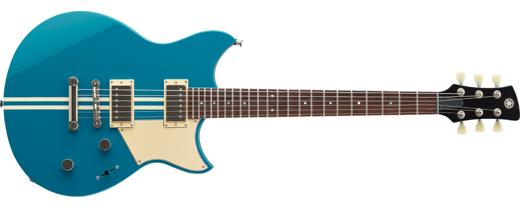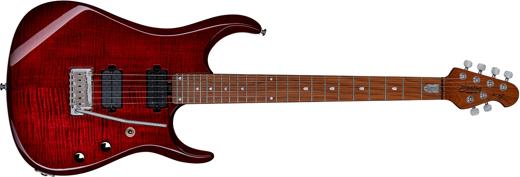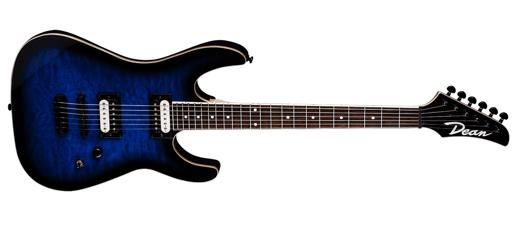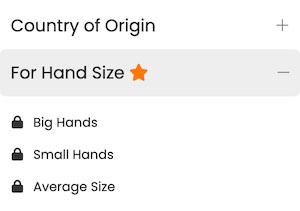Reverend Pete Anderson Eastsider Baritone Review & Prices
- From Reverend's 2021 Signature series
- Pete Anderson Signature
- Made in South Korea
- 6 strings
- 28.625"'' scale
- 10" to 14" Fretboard Radius
- Chambered Korina body
- Roasted Maple neck
- Roasted Maple fretboard
- Bridge pickup: Talnico Bridge (Single Coil/Passive)
- Middle pickup: Salnico Middle (Single Coil/Passive)
- Neck pickup: Salnico Neck (Single Coil/Passive)
- 1 volume and 1 tone Dome knobs
- 5-way Switch
- Wilkinson WV6 SB (Steel Block) Tremolo bridge
- Medium Oval Bolt-On neck
- 24 Jumbo frets
- Reverend Pin-Lock tuners
- Compare Specs >
Our Scores and Tone Evaluation
- Heavy Metal
- Hard Rock
- Jazz
- Blues
- Funk
- Country
Reverend Pete Anderson Eastsider Baritone
- Locking Tuners
- Expensive Wood
- Boneite Nut
- Top Brand Pickups
- Series Split Pickups
- Weight Relief
- Tremolo
- Compound Radius Fretboard
- Cheap Fret Wire (NS)
- Made in South Korea
- No Neck-Through Build
- No Luminescent Inlay
- No 21:1 Tuner Ratio
- No Strap Lock
Price Overview
Its average competitor's price is $1310, which means that the Reverend Pete Anderson Eastsider Baritone costs around 19% more than the competition. It might be due to it having additional features, but know that you can find cheaper similar alternatives. This takes into account all instruments of the same category in our database with 6 strings and Tremolo bridge that are made in South Korea.
These are affiliate links. We may earn a fee if you purchase after clicking. These prices are prone to error. Make sure you're buying the right product after clicking on a link from our site. We are not liable if you buy the wrong product after following these links. As an Amazon Associate site we earn from qualifying purchases.
Videos





Your feedback
Not all instruments are created equally. That's why it's important to have different opinions. Here's what our users who have played this instrument say. If you've played it before, help others by voting below!
Weight
VoteTuning stability
VoteNeck speed (thickness)
VoteNeck access to high frets
VoteNeck profile shape
VoteFret edges
VotePickups noise
VotePickups power
VoteIs it Easy to Play?
The Reverend Pete Anderson Eastsider Baritone meets 6 out of our 8 criteria items for beginner friendliness, which means that it's a good guitar to start with as a complete beginner. This takes into account the type of frets, scale length, nut width, bridge type, fretboard radius, and neck profile to determine the easiest combination for new players to get used to.
New Player Friendliness
Reverend Pete Anderson Eastsider Baritone- Comfortable shape
- Easy-to-use bridge
- Locking tuners
- Comfortable fretboard
- Tall frets
- Comfortable neck
- Narrow nut
- Short scale
Hand Size Comfortability
After taking into account the neck profile, scale size, fretboard radius, and nut width, we can conclude that the Reverend Pete Anderson Eastsider Baritone's construction is balanced for most hand sizes.
Nevertheless, this comes down in the end to personal preference. Make sure you test this guitar—or another one with similar characteristics—before buying.
Scale Length
Scale length is the distance the strings will span between the bridge and the nut. It can tell you a lot about the overall playability and tone of the instrument. A longer scale length means longer distance between frets, brighter tone and more string tension—which means lower action, but more difficult bending of the strings.
Here's the Reverend Pete Anderson Eastsider Baritone's 28.625" scale length compared to other common sizes:
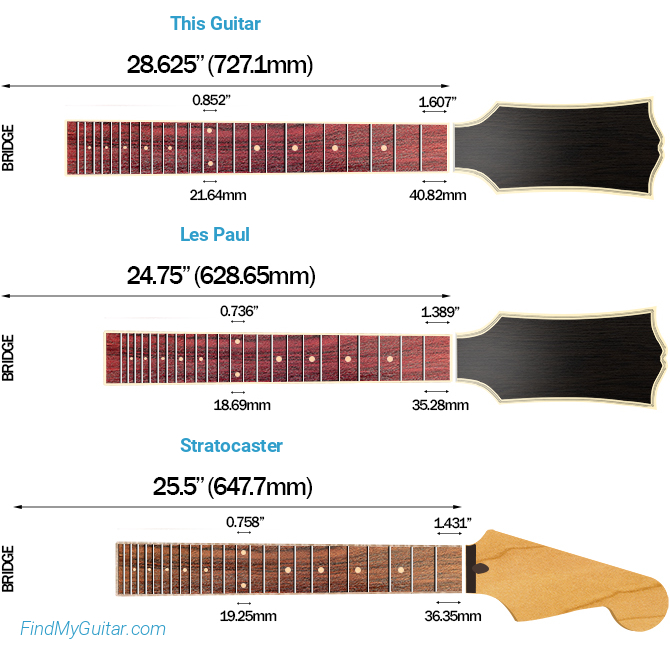
This is a scale used for baritone guitars, and it's probably one of the longest scales you'll ever encounter. Since the scale is so long, the strings will have a lot of tension. This means that bending will require a lot more strength than with a shorter scale. However, it also allows you to use really low tunings without causing fret buzz and without needing to increase your string gauge too much. Standard tunings on this scale will sound a lot brighter than on a normal guitar.
Neck Profile

The neck profile tells you the thickness (neck depth) and shape in cross section. Every difference will completely change the feeling and comfortability of the neck. This is a highly subjective thing, but most players indeed prefer certain types of necks (like Cs and Ds) because they feel nice in most hands.
The Reverend Pete Anderson Eastsider Baritone's neck thickness is approximately 0.85'' (21.6mm) at the first fret, and 0.9'' (22.9mm) at the twelfth.
These measurements were taken either from the official Reverend website, or, in case this information wasn't provided, by researching multiple online marketplaces and forums where owners of this model have posted their measurements.
It has a C type neck. C-shaped necks like this have been the most popular for the last years. The reason is that they feel good in most hands. It's generally a thin neck that doesn't get in your way when playing fast, but that also has enough mass to give your hands a comfortable grip for chords if they aren't too big.
Thin necks like this make it easier to move your hand across the neck and it helps when playing fast solos, especially if you like to leave your thumb free while playing high on the fretboard. However, thinner necks are also weaker and will need adjustment more often than a thicker neck.
Fretboard Radius
When it comes to fingerboard radius, personal preference will dictate which one is better for you. However, most people seem to agree that a more curved (lower) radius will make it easier to play chords while a less curved (higher) radius is better for soloing and bending.
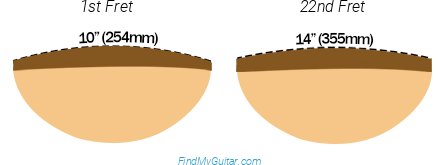
The Reverend Pete Anderson Eastsider Baritone has a compound fingerboard radius of 10" to 14".
A compound radius is the best you can get because you'll get the best of both worlds. It starts curved at the nut, but it flattens as you get closer to the body. This means that you'll get great comfortability for chords on the first few frets, but also a flatter fretboard for playing solos without problems on the higher frets.
Playability compared to main competitors
Nut Width
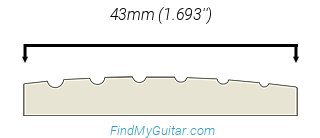
The Reverend Pete Anderson Eastsider Baritone has a nut width of 43mm (1.693''). This is within the most common range of nut widths for a 6-string guitar. It offers a good balance of string separation at the nut. It's the size that most guitarists prefer as it gives them just enough space to play open chords without muting the strings, but without spreading the strings too wide and making bar chords difficult to perform.
Frets
The Reverend Pete Anderson Eastsider Baritone has 24 frets. A lot of people mistakenly believe that having more frets will always be better because it gives you a higher octave. This is certainly an advantage, but there's also a disadvantage to this.
Since the fretboard will be longer, the neck pickup will need to be placed closer to the bridge. And as you may know, the further away the neck pickup is from the bridge, the warmer it sounds. This means you'll have a brighter-sounding neck pickup when using a 24-fret guitar, even if you use the same pickup on a 22-fret guitar.
It comes with nickel silver frets, so they won't last as long as stainless steel frets. If you use your instrument a lot, you might need to replace the frets after a few years. But this is unlikely as most people change instruments before this happens.
Fret Size

Finally, let's talk about fret size. Some people prefer tall frets because it's easier to press the strings and perform bends since there's less friction against the fretboard. On the other hand, some people like shorter frets because they like to touch the fretboard when playing, or because they got heavy hands and tend to press too much on the string and alter the of the note pitch accidently.
The Reverend Pete Anderson Eastsider Baritone's frets are Jumbo size. This is a tall fret size that is becoming increasingly popular because it makes it easier to press down the strings cleanly. With this fret size, you won't feel the fretboard when playing, so if you press down too hard, you will get the notes out of pitch. However, this is something you can overcome by getting used to the taller size.
Playability Score
Tone Analysis
Wood will have little influence in the final tone of an electric guitar or bass. Instead, the hardware, especially the pickups, will be the most important thing to look at. Bur first, let's see the quality of the wood.
Wood
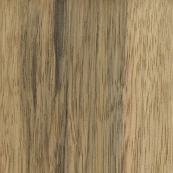

Limba Body: Available in either black or white, it's a type of wood with beautiful natural patterns decorated with long dark chocolate stripes. As a tonewood, it is comparable to Mahogany but with more mid-tones.
Roasted Maple Neck and Fretboard: Similar to simple Maple, but even stronger, darker, and more stable to temperature changes. This is thanks to the treatment process that consists in using high temperatures to drain the water, sugar, and resins from the wood.
Pickups
This guitar comes with pickups from one of the top brands: Reverend. So you can expect well built pickups with great sound that shouldn't need an upgrade anytime soon.
These are passive pickups, so you can expect a rounder sound and a moderade level of output.
The Reverend Pete Anderson Eastsider Baritone's configuration is SSS. This is the pickup configuration made famous by the Stratocaster. It gives you beautiful clean tones, but also a vintage-sounding distortion. This pickup combination will sound chimey, but you might be surprised at the warmness that you can get from a single-coil at the neck position on a 22-fret guitar. The disadvantage of this configuration is the hum noise that single-coils produce due to their nature.
More with the same pickups
Versatility
It gives you a good amount of tone options with its 5-way switch. You can use it to choose at least 5 different pickup combinations.
It has a Series Split option. Some pickups will be wired in series (the ground wire of one is connected to the hot wire of the other). This is how Humbuckers are usually connected, so you can expect a fuller sound with more output than two single-coils connected in parallel.
Diagram
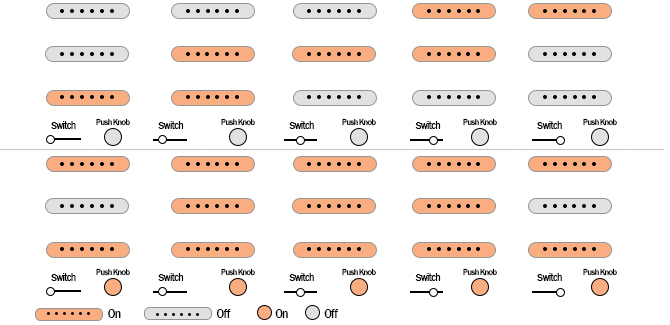
What music genre is it good for?
As a 6 strings, Solid Body guitar with SSS configuration and Passive pickups, we'd recommend it for genres like Funk or similar. However, you can use almost any guitar for any genre. This is just the typical type of music for this particular one.
Sound Score
Build Quality Analysis
Country of Origin
Knowing where the instrument is produced is a good way to know how well it's built. Some manufacturing countries are known for having higher quality standards. For example, most expensive instruments are made in the US or Japan, but there are some exceptionally great countries—like South Korea—that are building a good reputation.
The Reverend Pete Anderson Eastsider Baritone is made in South Korea. Guitars made here are well-built and tend to have good quality control, even though they focus on mass production. This used to be the most premium option just below Japan or the US, but other countries like Indonesia are becoming great competitors because of even cheaper labor without sacrificing quality.
Bridge
Wilkinson WV6 SB (Steel Block) Tremolo: This type of bridge allows you to change the pitch of the notes by pulling the bridge with the attached bar, which gives you better versatility. Also, since the bridge is not fixed to the guitar body, the bridge will move as you bend the strings. So you'll have to increase the distance of your bends to reach the same tension (note) compared to a fixed bridge. This allows you to perform smoother bends but will also make you slower. Finally, remember that this type of bridge requires a bit more maintenance than fixed ones, especially when changing strings.
Tuners
The Reverend Pete Anderson Eastsider Baritone comes with locking tuners, which helps with tuning stability and makes changing strings a lot faster and easier. As long as they're high quality, these are the best tuning machines you can have. The only disadvantage is that they are a bit heavier than normal tuners.
Nut Material
Another important thing to analyze is the nut material, as it's one of the most important aspects that can affect the sound and playability of your guitar. A well-cut nut will make sure it stays in tune and will make it more comfortable to play.
In this case, the Reverend Pete Anderson Eastsider Baritone has a Boneite nut. This is a synthetic bone material made to look, feel and sound like bone. It's more consistent than bone since it's human-made, so many people prefer this type of nut to guarantee a good nut.
Neck Joint
The neck joint is the part where the neck of the guitar meets the body. There are three main techniques to attach both parts together: Set-In, Bolt-On and Neck-Through. The latter two provide different advantages, although neck-throughs are the most expensive.
This guitar has a Bolt-On neck joint. Even though this type of neck was looked down upon for a long time, nowadays bolt-on necks are well built and provide just as much sustain as any other join method. First of all, it's cheap to make because it consists of simply 4 bolts that attach the neck to the body. And you can travel with the guitar more easily, swap out the neck if you damage it, or upgrade to a more comfortable neck later on.
Build Quality Score
All Specs
Reverend Pete Anderson Eastsider BaritoneUser Reviews
Help others by sharing your opinion about this guitar. Note: to avoid spam, your review will be submitted for approval before appearing here.
